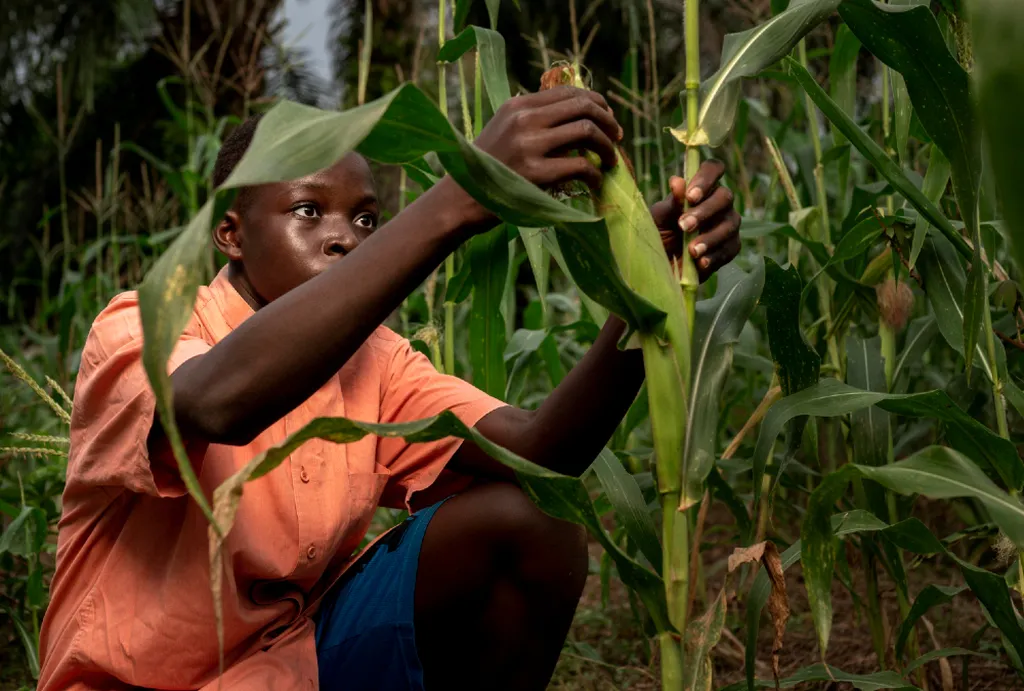In the heart of Germany, a Nigerian researcher is making waves in the world of precision agriculture, offering a glimpse into a future where corn farming could be both more sustainable and more profitable. Oyebanji O. Alagbo, a graduate student at the University of Hohenheim, has been exploring the potential of precision hoeing methods in ridge tillage systems, and his findings, published in the journal *Weed Technology* (translated as *Weed Technology*), could reshape the way we think about weed control and soil management in corn production.
Alagbo’s research, conducted over three years, delved into the effectiveness of different precision hoeing methods on re-compacted ridges in corn fields. The goal was to evaluate not just weed control, but also the impact of these methods on soil temperature and moisture retention. “We wanted to understand how these practices could influence both the immediate yield and the long-term sustainability of corn production,” Alagbo explained.
The study employed two ridge cultivators, the Glühfosator and the Damm Profi, to test various treatments. These included hoeing alone, hoeing combined with band herbicide spraying, hoeing with living mulch sown in the ridge valleys, and hoeing combined with a postemergence harrow. The results were promising, with some treatments showing weed control efficacy comparable to broadcast herbicide application.
One of the most significant findings was the potential for precision hoeing to reduce weed biomass substantially. “In most trials, the hoeing treatments were not significantly different from that of applying a broadcast herbicide,” Alagbo noted. This is a big deal for the energy sector, particularly for bioenergy producers who rely on corn silage for feedstock. Reduced herbicide use could lead to cost savings and a smaller environmental footprint, making the production process more sustainable and potentially more profitable.
The study also revealed that re-compacted ridges could offer resilience against extreme rainfall events. “When rainfall was limited, re-compacted ridges demonstrated moisture conservation, which resulted in higher day-warming and lower night-cooling of ridge valleys,” Alagbo said. “But when rain is heavy, ridges drained moisture effectively and exhibited higher day-warming and lower night-cooling of ridge areas.” This adaptability could be crucial in an era of increasingly unpredictable weather patterns.
The commercial implications are substantial. By adopting these precision hoeing methods, farmers could see increased yields and improved soil health, leading to long-term benefits for both the environment and the bottom line. “Depending on corn cultivar and ridge cultivator, the treatments resulted in corn silage yield that was similar to or greater than that of a broadcast herbicide,” Alagbo explained. This could translate into significant gains for bioenergy producers, who stand to benefit from a more reliable and sustainable feedstock supply.
Alagbo’s research is a testament to the power of precision agriculture. By harnessing technology and innovative practices, farmers can achieve better weed control, improved soil management, and ultimately, higher yields. As the world grapples with the challenges of climate change and resource depletion, these findings offer a beacon of hope for a more sustainable future.
The study, published in *Weed Technology*, opens up new avenues for exploration in the field of precision agriculture. As researchers continue to refine these methods, the potential for even greater improvements in yield and sustainability becomes increasingly apparent. For the energy sector, this research could pave the way for a more resilient and efficient bioenergy supply chain, ultimately contributing to a cleaner, greener future.

